Author: CBCbooks
-
Fans and Families Everywhere Get Set for a Spooktacular Halloween with Goosebumps™
New York, NY – Ghouls and boys of all ages will celebrate Halloween with a host of frighteningly fun new Goosebumps™ activities and events! To help fans everywhere get into the spirit,Goosebumps author – …
-
Katherine Paterson’s Nonfiction Debut
In spite of a late start, Paterson eventually found great success as a writer. She has garnered two National Book Awards as well as Newbery Medals for Bridge to Terabitha and Jacob Have I …
-
Writing Tricks From Successful Young Adult Authors
“Rainbow Rowell never set out to be a YA author. Her first book, Attachments, was for and about adults, and though Eleanor & Park is a teenage love story set …
-
Pottermore to Release New J.K. Rowling Writing About Dolores Umbridge On Halloween
London, England – In a special Halloween treat for Harry Potter fans, J.K. Rowling’s website pottermore.com will post new original writing on October 31 about the witch and former Hogwarts professor Dolores Umbridge. The character …
-
Call for More Inclusive Stories in the Science-Fiction & Fantasy Genre
Within the past few years, the call for more representative children’s books has been steadily building. A Twitter conversation between YA fantasy authors Ellen Oh and Malinda Lo sparked the popular We …
-
HarperCollins Publishers Acquires Two-Book Deal By Award-Winning Author Patrick Ness
New York, NY — HarperCollins Publishers announced today the acquisition of a two-book deal by critically acclaimed author Patrick Ness, author of the award winning A Monster Calls, More Than This, and …
-
Daniel Handler Introduces a New Indies First Initiative Called Upstream
This would allow indie book shops that are not located in big cities to sell autographed books to their customers. Handler wrote a letter and posted it online in the …
-
Bestselling ‘Diary of a Wimpy Kid’ Series Has Over 150 Million Copies in Print Worldwide
New York, NY – Amulet Books, an imprint of ABRAMS, announced today that Jeff Kinney’s Diary of a Wimpy Kid series will surpass 150 million copies in print on November 4, 2014, …
-
CBC Diversity: Embracing Diversity Without Qualifiers — An Observation
Last week, I came across an interesting article via one of my personal favorite pop culture websites Pajiba.com (their Walking Dead and Game of Thrones coverage makes this self-affirmed geek very happy – what can I say?) - an article that initially enraged me. And then stuck with me and made me think.
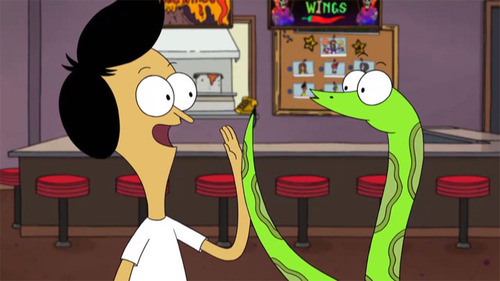
The article in question called out a recent, somewhat controversial interview with author Matthew Klickstein, creator of a new book called SLIMED! An Oral History on Nickelodeon’s Golden Age, on the site Flavorwire. In the interview, Klickstein discussed the network’s “diversity problem” and, in specific examples, pointed to current Nickelodeon shows (such as the popular Sanjay and Craig) where he criticized instances of showcasing diversity for the sake of diversity, casting lead roles in animated shows where there was no reason for said characters to be ethnically diverse.
There are plenty of hot-button points Klickstein makes in his interview specifically on topics in the ongoing diversity dialogue that I won’t get into here, but what stuck with me long after reading was a point Klickstein made that resonated with me in a way I don’t think was his intention. According to Klickstein, the strength of a good character within any medium comes down in the simplest form to the writing and development, and in that way, maybe it shouldn’t matter whether said character is Caucasian, Hispanic, African-American, or any other ethnicity, if said ethnicity doesn’t impact the show’s storyline.
My argument in response to that basic reasoning is that Klickstein is demonstrating exactly why it’s so vital to introduce greater diversity into mainstream culture, from television to the publishing industry. Every literary character in his or her most basic composition has quirks, flaws, personality traits, and essential elements that make him or her unique and worthy of exploration by a writer, regardless of the medium. Some of those elements are clearly influenced by a person’s ethnic background, or the life they’ve lead within their individual skin, whether for better or for worse. But there remain basic elements, essential elements, to just being a human being that connect all of us on a basic level that transcend those lines, elements that are vital to character development in any really great piece of writing.
Klickstein’s point is that at the end of the day, the character is what matters, but my argument in return is that, if at the most basic level, essential human elements are shared between all of us, why not embrace every opportunity to color all of literature and television with characters who embody those human traits, even if specific cultural factors aren’t incorporated into the storyline?
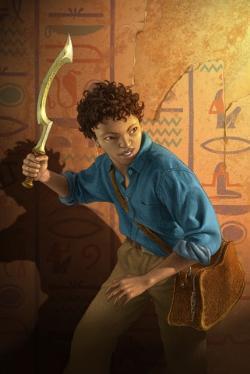
Does Sanjay need to be an Indian character to be an entertaining one on Sanjay and Craig? No. Did Carter Kane in Rick Riordan’s The Kane Chronicles need to come from a mixed-race background? No. For the elements of the story that keep the essential plotlines moving in those particular instances, ethnicity only appears in broad strokes to come into play in physical depiction.
And that’s the point. Kids growing up, watching TV and reading, need to see themselves and their respective cultures represented truthfully on screen. But they also need to see a world where kids go through regular, every-day problems that are shared human experiences transcending cultural barriers. Sure, Dora the Explorer could have been a Caucasian character (with impressive Spanish-speaking skills), successfully teaching children basic educational concepts. But by the same token, Harry Potter could have been an African-American character too. His character trajectory as depicted by J.K. Rowling would have been essentially the same, and yet one little boy or girl out there might have been impacted in seeing this regular, ordinary kid look a little more like them.
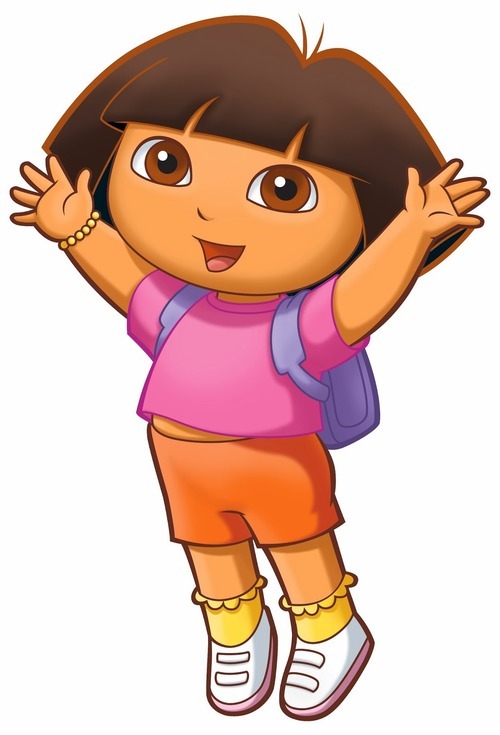
I’m not advocating for diversity for diversity’s sake without thoughtful look at how all ethnic backgrounds are depicted in entertainment. And I realize I’m making a bit of a broad strokes statement by claiming that characters with diverse backgrounds can be swapped around like stand-ins in a school play (or that Harry Potter wasn’t, in my mind, a fantastic character just as Rowling depicted him). It’s certainly much more complicated than that.
But I do think it’s important to remember and to consider that, as a publishing community, we are providing for future generations with a road map of our culture through the literature we offer the world. Don’t we want that world, even in the most mundane interactions and even in the most broad-reaching story lines, to reflect the fascinating, and diverse world it’s become?
-
Cecelia Ahern to Publish Her Debut Young Adult Fiction Books
“Ahern, whose bestselling books for adults include PS, I Love You and How to Fall in Love, sets Flawed and Perfect in a future society where perfection is valued above …
-
Little Five Star Partners with ‘Pets in the Classroom’ Program
The Arizona-based publisher is currently seeking sponsors to help deliver a copy of Storad’s book to recipients of this year’s ‘Pets in the Classroom’ grant. Featuring illustrations by Alex Lopez, the book teaches children …
-
CBC Diversity: ‘PW’ Panel Warns Industry, Lack of Diversity Threatens Publishing
'PW' Panel Warns Industry, Lack of Diversity Threatens Publishing:
At a panel about the lack of diversity in the book publishing industry, hosted by PW, a number of publishing professionals warned that the overwhelmingly white makeup of the industry threatens its long-term viability.Two of the three amazing panelists were a part of DIBs (Diversity in Books), the group of editors who helped create the CBC Diversity Committee. Alvina Ling and Stacey Barney not only talked about some of the barriers (to entry into the publishing world along with publishing more inclusive stories), but highlighted some of the amazing bright spots in publishing that need to be celebrated in this conversation. Some of these include:
- Diversity committees instituted inside publishing houses
- Titles written by and starring people of color that have reached the bestsellers list
- Outreach to schools and universities (in-person and through virtual career fairs that introduce students early to the possibility of a career in publishing)
After about an hour of moderated discussion, the conversation was opened for audience participation. One question that was asked of the panel near the end was, “To continue to move the conversation forward, but also as a means to institute more action and change, what collaborations/partnerships/programs would you like to see instituted to help promote more diversity in-house as well as get more books supported that are written by and about people from different cultures?”
Some of the panel’s answers?
- More scholarship programs for publishing programs/internships to help with the financial burden of getting your start in publishing
- More partnerships with media outlets to cover more diverse offerings
- Finding a way to utilize celebrities to endorse reading cross-culturally
- More support systems to allow individuals to be in the publishing world (like mentorship programs)
-
Taylor Swift Joins Scholastic to Talk to Kids About the Power of Reading
New York, NY — Scholastic, the world’s largest publisher and distributor of children’s books will present an exclusive video featuring an inspiring, personal conversation withTaylor Swift the global superstar and seven-time Grammy® winner about …
-
A “Kaleidoscope of Books for the Classroom”
Last week, at the National Children’s Book and Literacy Alliance (NCBLA)’s In Search of Wonder: Common Core & More Conference in Ohio, specialists in literature for young people shared their …
-
Announcing YALSA’s 2014 Teens’ Top Ten
Eleanor & Park by Rainbow Rowell (Macmillan/St. Martin’s Griffin) Splintered by A.G. Howard (ABRAMS/Amulet Books) The Rithmatist by Brandon Sanderson (Tor Teen) The 5th Wave by Rick Yancey (Penguin/Putnam Juvenile) Monument 14: Sky on Fire by Emmy …
-
Pearson Foundation Selects Groundbreaking Nonprofit to Receive Digital Platform and $1.3M
Press Release First Book to Harness Power of We Give Books on Behalf of Children in Need WASHINGTON, October 20, 2014 – First Book today announced a significant new commitment …
-
CBC Diversity: “Here I Am!”
Contributed to CBC Diversity by Brian Pinkney
When I was ten years old, my mom and dad made me my very own art studio. Actually, the “studio” was a walk-in closet that my parents converted so that I could have a place to call my own. It was the perfect spot for expressing my creativity without interruptions. (As one of four children, finding time to myself wasn’t always easy.)
As a budding artist, I wanted to grow up to become a children’s book creator, just like my father, illustrator Jerry Pinkney. Watching Dad, I was very fortunate to see books in which black children were front-and-center. Seeing Dad’s characters showed me, me. And it established a simple truth ― black kids in books were beautiful and could be rendered abundantly.
Following in Dad’s footsteps, I spent hours in my little workspace drawing all kinds of pictures. I also read lots of books, and dreamed big. Looking back, I realize now that my junior studio was a kind of retreat where I could pore over the pages of picture books. These books and their illustrations had an impact on how I perceived myself as an African American kid.
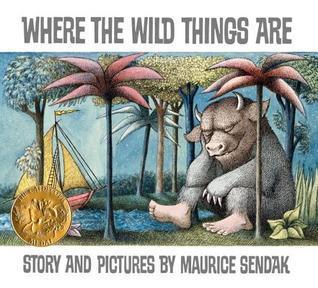
I also escaped to the studio so that I could enjoy all kinds of adventures that bubbled up in my imagination as I wrapped myself in books such as Where the Wild Things Are by Maurice Sendak. It didn’t matter to me that Max, the kid in Where the Wild Things Are, wasn’t black. He was me, and I was him. I saw myself through his adventures, not through his skin color.
Also, having observed my father’s depictions of black children, while at the same time loving books with all kinds of characters, gave me the gift of seeing picture books through two lenses ― the experiential and the cultural.
With so few picture books that included black characters like Max in Where the Wild Things Are ― kids who were having fun, embarking on adventures, pushing past authority, and exploring unchartered forests ― I was made to straddle two worlds: the universe of just being a kid and the land of being a black boy. Because I saw so few black kids in picture books who were like Max (and, who, through their adventures, were like me too), I was plunged into a syndrome that I’ve come to call “Where Am I?”
It’s been said many times, but can’t be stressed enough. Here’s how “Where Am I?” manifested in my world:
- As an African American kid growing up in the 1960s, there were very few books that reflected my experience.
- There weren’t many books that depicted boys who looked like me embarking on new discoveries, in the same way Sendak’s Max had done.
- By not seeing myself represented in books in these ways, I began to feel like a nonentity ― like the hole in the doughnut. I constantly asked, “Where am I?”
Seeing my father’s work showed me that, like my Dad, I could be the one who could someday give black kids images of themselves in books that reflected universal experiences. As a fourth grader, I didn’t walk around pounding my chest claiming to change the world through my art. Instead, I made a quiet, conscious choice. And as I grew as an illustrator, I stepped into that choice by deciding that the books I wrote and illustrated would do more than simply depict kids of color. I set an intention. Through my picture books, I would change “Where Am I?” to “Here I Am!”
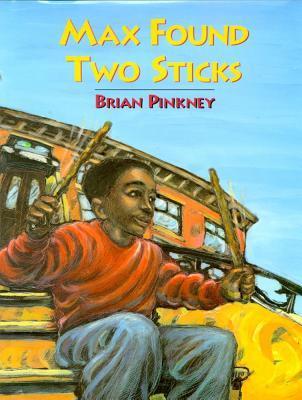
I started with a Max of my own creation. In my debut book as an author/illustrator, entitled Max Found Two Sticks (Simon & Schuster), young Max has limited language ability. Instead of talking, he expresses himself through the drumbeats he plays on the objects found in his urban neighborhood. Through Max’s own musicality and kinetic intelligence, he expresses his creativity and brilliance to everyone he meets. There’s also a magical realism element to the story. Not once is there mention of Max’s racial identity or ethnicity. He’s any kid and every kid who discovers his power through his own unique form of self-expression.
Max Found Two Sticks is one of my best-selling titles to date, and it has been embraced by kids and parents for its ability to empower readers of all types and abilities ― kids who struggle with reading and language; kids who are creative; children on the autism spectrum; and those who perceive their world through sound.
Max Found Two Sticks showed me something important, as it relates to diversity. I discovered that by empowering black characters, I was empowering all kids. This would seem obvious, but to many, it’s not. There’s still an assumption that picture books with black kids (especially black boys) as their central characters, can only appeal to a limited segment of the population. That showing a black boy front-and-center on a picture book’s cover, means that book is “for black boys only.”
It was an uphill climb to gain “crossover success” for Max Found Two Sticks. But it happened after years of me presenting the book at school visits and literacy conferences, where young readers and adults began to look past the book’s cover to its universality.
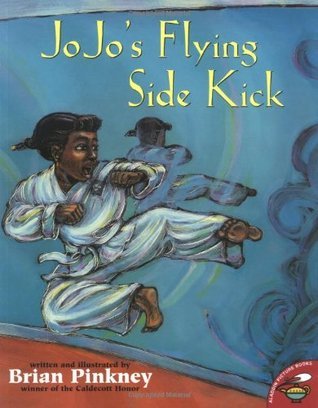
The same has been true of a picture book that I wrote and illustrated, entitled Jo-Jo’s Flying Sidekick (Simon & Schuster) about a girl who finds her own inner strength when she aces a martial arts test. The book’s cover shows high-flying Jo-Jo, who is African American, performing her best Tae Kwon Do maneuver. My intention with Jo-Jo’s Flying Sidekick was to take the “Here I Am!” ideal to even greater heights. But I soon learned that the book had two strikes against it, in the eyes of some readers. People assumed that Jo-Jo’s Flying Sidekick was a book for either Asian kids or black kids only ― until they read it, and saw that, like every child, everywhere, Jo-Jo faces, and overcomes, some of her worst fears. For reasons similar to Max Found Two Sticks (the limited perceptions of viewers who choose books by cover images), Jo-Jo’s Flying Sidekick was a slow build. But in time, the book turned into one of my strongest sellers, often purchased by parents, kids and teachers who are not of color.
I’m now embarking on a new book, entitled On the Ball (Hyperion/Disney Publishing, Fall 2015) that employs some of the same elements as my previous books that I’ve both written and illustrated. The story is told in minimal text. A curious boy chases after a lost soccer ball, and finds mystical animals, as well as his own hidden talents.
As a renderer of images that affect children, it’s essential that I stick to my commitment of showing black kids in all their glory. By doing this, I hope to be able to bring power, change, healing, self-expression, and heart to children of every color.
For anyone who reads and shares picture books with children, here are some tools that are helpful in moving past “Where Am I?” ― and making “Here I Am!” the way of our world:
- Cover Conversations: Before even opening a book, engage a child in a discussion about its cover by saying, “Wow, look at that boy on the front. He’s got drumsticks in his hand. What do you think this story is about?” And then inviting the reader open the book to find out more.
- Make it Personal: Ask a kid, “What are some of the things in this story that are similar to your own life, family, school, dreams, plans, etc.?
- Teachers Teach: Insist that your child’s teacher or school librarian always, under all circumstances, include books during story times and in classroom libraries that include people of color. Most folks are well-intentioned, but sometimes forget.
- Sail Away: Let a book’s story drive a child’s interest, rather than the color of its characters. Invite kids to create their own adventures based on the book’s themes.

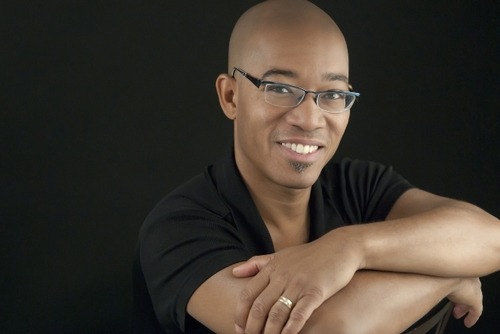 Brian Pinkney is a two-time recipient of the Caldecott Honor medal and a New York Times bestselling illustrator. He was named one of the “25 Most Influential People in Our Children’s Lives” by Children’s Health magazine. To learn more about Brian Pinkney, visit www.brianpinkney.net.
Brian Pinkney is a two-time recipient of the Caldecott Honor medal and a New York Times bestselling illustrator. He was named one of the “25 Most Influential People in Our Children’s Lives” by Children’s Health magazine. To learn more about Brian Pinkney, visit www.brianpinkney.net. -
Meg Wolitzer Defends Adults Who Read Y.A.
“In fact, there’s just far too much variety in Y.A. to define it or dismiss it, and I don’t feel obliged to cast off my teenage reading habits as if …
-
Scholastic Turns 94
“Today (94 years later), 80% of K-6 classrooms in the United States read Scholastic classroom magazines each month. The 28 magazine titles, which include Scholastic News, Junior Scholastic, MATH, Scope, …
-
We Need Diverse Books to Launch the Walter Dean Myers Award
Grant winners will receive anywhere from $2,000 to $5,000 each depending on how much money is obtained through fundraising ventures. The organization will be running an Indiegogo campaign on October …





















